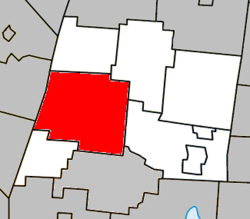
Estrie is an administrative region of Quebec that comprises the Eastern Townships. Estrie, a French neologism, was coined as a derivative of est, "east". Originally settled by anglophones, today it is about 90 per cent francophone. Anglophones are concentrated in Lennoxville, home of the region's only English-speaking university, Bishop's University. The Eastern Townships School Board runs 20 elementary schools, three high schools, and a learning centre.

La Haute-Yamaska is a regional county municipality in the Estrie region of Quebec, Canada. Its seat is Granby.
Shefford County is an historical county in southern Québec, Canada. It is named after Shefford, a small town in Bedfordshire county, England of the same name and is in the Eastern Townships region of Québec.

Cowansville is a town in south-central Quebec, Canada, located on Lac Davignon 20 kilometres (12 mi) north of the U.S. border. It is the seat of Brome-Missisquoi, a regional county municipality. The population as of the Canada 2021 Census was 15,234.

Farnham is a city in Brome-Missisquoi Regional County Municipality in the Estrie region of Quebec, Canada. The population as of the Canada 2021 Census was 10,149, making it the second most populated community in the RCM.
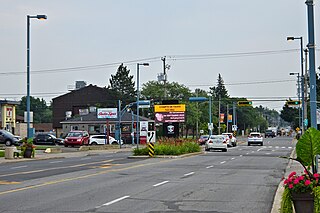
Pincourt is a municipality on the island of Île Perrot, off the western tip of the island of Montreal, Quebec. The population as of the 2021 Canadian census was 14,751. The town shares the island with the three other municipalities of Notre-Dame-de-l'Île-Perrot, Terrasse Vaudreuil and L'Île-Perrot, bordering on each one. The south end of the Ottawa River flows between Vaudreuil-Dorion and Pincourt, defining the town's western boundary.

The Town of Brome Lake is a town in southern Quebec, Canada. The population as of the Canada 2011 Census was 5,609. Tourism is a major industry in the village of Knowlton because of skiing in the winter, lake activities in summer, and autumn leaf colour.
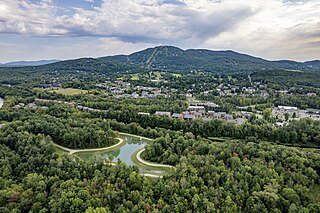
Bromont is a city in southern Quebec, Canada, at the base of Mont Brome; it is in the Brome-Missisquoi Regional County Municipality. The Bromont area and its resort, Ski Bromont, is well known as a tourist destination for its downhill skiing, mountain biking, BMX-riding and water slides. It also features golf and equestrian events in moderate weather. Bromont also boasts a high-tech industrial park, which includes IBM, General Electric, and Teledyne DALSA. Bromont Airport serves the region.
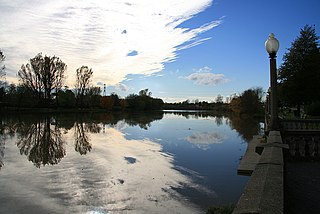
The Yamaska River is a river in southern Quebec, Canada.
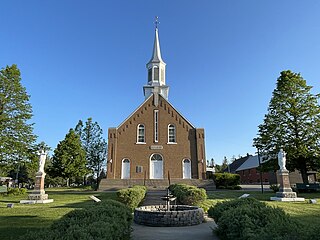
Notre-Dame-du-Mont-Carmel in the Mauricie region of the province of Quebec in Canada.

Baie-du-Febvre is a municipality in the Nicolet-Yamaska Regional County Municipality of Quebec, Canada. The population as of the Canada 2021 Census was 961. The municipality lies on the south shore of Lac Saint-Pierre, a section of the Saint Lawrence River.

Hérouxville is a parish municipality in the Mékinac Regional County Municipality in the administrative region of Mauricie, in the province of Quebec, Canada. Its watershed is mainly part of the Batiscanie.
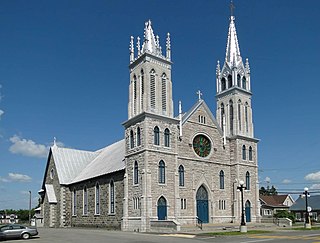
Saint-Narcisse is a parish municipality located in the regional county municipality (MRC) Chenaux, in the administrative region of Mauricie, in the province of Quebec, in Canada. Located on the North Shore of the Saint Lawrence River, about 30 km (19 mi) from downtown Trois-Rivières, the parish of Saint-Narcisse is the heart of the Mauricie region.

Shefford is a township municipality located in the province of Quebec. It is part of the Haute-Yamaska Regional County Municipality in the administrative area of Estrie. The population as of the Canada 2021 Census was 7,253. The township completely encircles the city of Waterloo and the city of Warden.
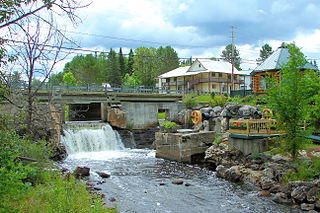
Aumond is a township municipality in the Canadian province of Quebec, located within La Vallée-de-la-Gatineau Regional County Municipality.

Wentworth is a township municipality in the Laurentides region of Quebec, Canada, part of the Argenteuil Regional County Municipality, north-west of Lachute.

Lac-Simon is a town and municipality in the Outaouais region of Quebec, Canada, part of the Papineau Regional County Municipality.

Roxton Pond is a municipality in the Canadian province of Quebec, located within La Haute-Yamaska Regional County Municipality. The population as of the 2021 Canadian Census was 4,224. The municipality was created in 1997 with the merger of the Parish and the Village of Roxton Pond.

Lac-Pikauba is an unorganized territory in the Capitale-Nationale region of Quebec, Canada. It is a large, unpopulated, undeveloped territory that makes up two-thirds of the Charlevoix Regional County Municipality.
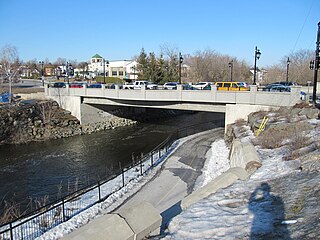
The North Yamaska river is a tributary of the Yamaska river. It flows over 47.8 kilometres (29.7 mi) on the south shore of the Saint Lawrence river in Quebec, Canada and passes through five municipalities, some of them sourcing their fresh water from it.

